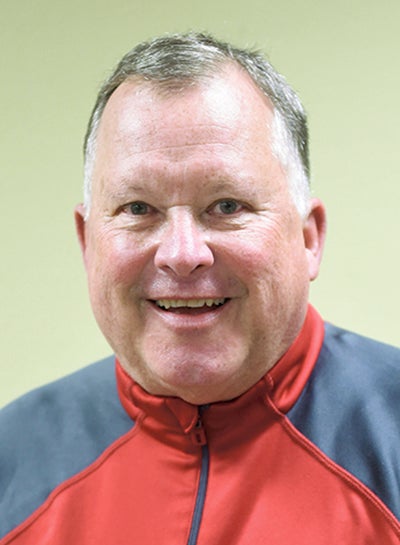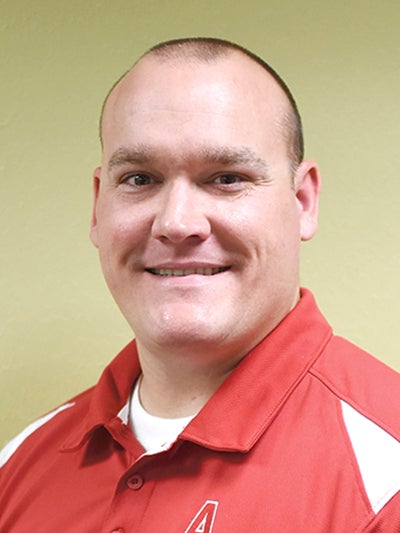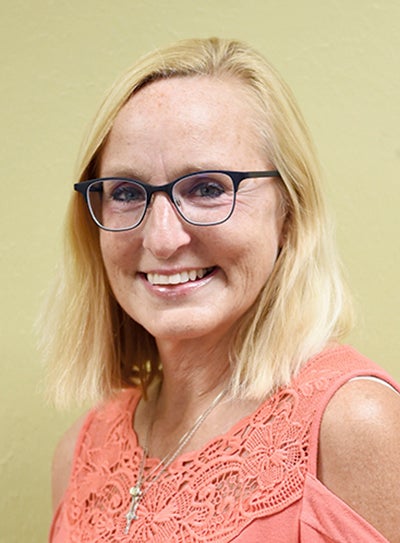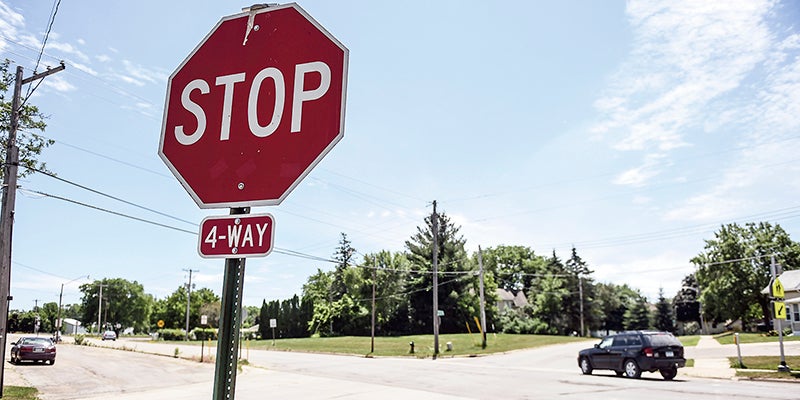3 more school board candidates look at referendum, other issues that impact APS
Published 6:50 am Wednesday, September 23, 2020
|
Getting your Trinity Audio player ready...
|
Editor’s Note: This is the second part of a Q&A featuring Austin School Board candidates on issues facing the school district.
This week features Don Leathers, Evan Sorenson and Carol McAlister.
Three more candidates for the Austin School Board gave their answers on selling the issue of an operating levy referendum as well as the issues of vaping in schools and ensuring students can keep up in the era of COVID-19.
1. The school board has given the green light for putting an operating levy referendum on the Nov. 3 ballot. How do you sell the need for the referendum to the public?

Don Leathers
Don Leathers: Let me simply state that school funding for K-12 public schools in Minnesota is woefully inadequate. For instance, if school officials advocate at the Capitol for a 3 percent increase in a biennium, it usually is pared down in St. Paul to 2 percent or 1.5 percent per year. It is no accident that public schools put operating referendums on their ballots. The dollars are desperately needed for districts to continue providing services for students and staff. COVID-19 makes these dollars needed more than ever. Austin Public Schools’ (APS) operating referendum is currently at around $43 per student. The Big Nine Conference average is in the area of $800+.
By having a low operating budget, ISD 492 has saved local taxpayers considerable dollars over the past decade. APS has an outstanding Finance Director, Lori Volz, who is leading the district in a fiscally, prudent direction. The School Board is not proposing that the district reaches the Big Nine average, but we would like to be at a more reasonable number, a little over $500 per student. One additional positive of passing the referendum is that the state of Minnesota picks up roughly half of the cost.
Evan Sorenson: The pandemic has negatively affected all of us as a community, including my family. It is well known that area taxpayers are struggling to keep up with tax increases. The school district has not asked for an operating levy in the past 17 years. During that time, the budget has steadily fallen behind comparable districts throughout our conference and state. I believ,e like you, that our district deserves the best support our community can provide. Regardless of the budget available, I will educate myself on the future needs of our students, district and the taxpayers I represent.
Carol McAlister: I believe that communicating with integrity, and being as transparent as possible with the public, will ensure that the voters are engaged in the success of Austin Public Schools. With the community still recovering from the financial effects

Evan Sorenson
caused by the pandemic, selling the operating referendum to the public will take the communication of factual, unbiased information so voters can make an educated decision. I feel that it is better to over-communicate rather than under-communicate the financial needs of the school district.
The Austin Public Schools website has excellent information about the Referendum 2020, which includes financial presentations, a property tax impact estimator, and FAQs. I encourage voters to view the information on the website (www.austin.k12.mn.us/Pages/referendum2020.aspx), and calculate your personal tax impact. Questions can be directed to Lori Volz. The media has also covered several stories about the referendum.
The district has implemented cost efficiencies, which will reduce expenditures by $1.2 million. However, an operating referendum is still needed to prevent additional cost saving measures, such as a reduction in staff, an increase in class size, and a decrease in the scope of course offerings.
I encourage the public to gain education on the operating referendum, ask questions and please vote.
2. Even though a recent study indicated less teens vaped over the past year, the problem still remains. What steps should the board and district take or continue to take in order to ensure they remain on top of the problem?

Carol McAlister
Leathers: Most of Austin residents have probably seen the billboards around town that say something like: “Most of Ellis students say no to using marijuana,” or “A majority of students at Austin High School have not consumed alcohol in the past month.”
These messages are part of a continuous program by district leaders to promote healthy living decisions by Austin students. Whether it is marijuana, alcohol or vaping, leaders and students at APS are actively searching for ways to eliminate substance use, and abuse, in its student body. And it isn’t simply done with ads on billboards. Active groups of students are working directly with staff to explore avenues of establishing positive habits that last a lifetime. They share their experiences in group settings and model their behavior for others. But, without question, there is more work to be done.
Sorenson: Teen vaping is a serious fear for all parents. The potential serious health effects and lack of long term medical research make vaping prevention paramount. The Austin Positive Action Coalition (APAC) is a grant funded program created to reduce and prevent drug, alcohol, and tobacco use among local students, grades 6-12.
APAC works closely with our district to prevent substance abuse through programming including, Truth Is, STAND (Students Taking a New Direction), Youth Leadership Academy, and Upstander. These programs empower student leaders to educate their peers on the risks associated with drug, alcohol, and nicotine use. The APAC Coalition uses research data they collect through surveys to spread messages of hope and concern. As a School Board member, I will advocate and encourage the continued support and use of these programs for our students. As a peace officer, I wholeheartedly believe prevention and education on drug, alcohol and tobacco use is essential for our student’s abstinence from vaping and other harmful substances.
McAlister: Education is a tool the district can use to ensure they remain on top of the vaping problem. I am a member of APAC (Austin Positive Action Coalition), which provides education and prevention resources our youth in the schools and within the community to reduce substance use. APAC has an intensive Vaping Campaign, which delivers vaping education to the schools, parents, and the community members using positive community norms messaging. Hallway posters, floor posters, school monitors, billboards are some examples. Empowering students with information on how to stay healthy is our first defense to help them resist the dangerous temptation of vaping.
STAND (Students Taking a New Direction) is the student coalition of APAC. Youth coalitions are motivated by students who are passionate about not using substances, so peers can be an effective tool to provide additional resources to reduce vaping.
Educating parents, teachers and administrators on vaping is the key to ensuring the district stays on top of the issue. Vaping is easy to disguise. The devices are odorless, smokeless, and look like USB thumb drives and ordinary pens. My hope is that parents will start the dialog with their kids on the dangers of vaping, and the teachers will follow-up in the classroom.
3. Undoubtedly, the COVID-19 pandemic has created issues in how education is delivered, leaving many students at risk of falling further behind. How does the district ensure, even when the pandemic is gone, that students catch up and get the best education possible?
Leathers: Currently, educators at APS are working with students through distance learning, in-person instruction and, at IJ Holten, Ellis and the high school, a hybrid model. Several parents in the district have opted out of in-person instruction, favoring the distance learning approach, for varying reasons. Regardless of the model, ISD 492 teachers and staff are putting a tremendous amount of time, energy and creativity into their lessons so their students have a quality, meaningful educational experience. Parents can help with these endeavors by working directly with their son or daughter and staying in touch with teachers to help ensure their students’ success. Much has changed since the shutdown of schools last spring.
Teachers are employing advanced technology strategies and interactive lessons to keep their students engaged, both educationally and social-emotionally. As a former educator, I am amazed at the tireless energy that the staff at Austin Public Schools is expending to help district students receive the quality education they so richly deserve. My desire is that every parent sends an e-mail, directly visits or makes a phone call to a teacher to express their gratitude for the important work she or he has done. On the card I hand to voters prior to the election is a sentence that I feel is true now more than ever: “Together We are Stronger.” I am extremely proud of Austin Public Schools, its hardworking staff, and the rich diversity of its students and parents. Together, we will get through these challenging times.
Sorenson: As a parent, I have serious concerns about this topic. Like many of you, my daughter’s first year of kindergarten at Woodson was cut short leaving my wife and I concerned about her progress. Through the pandemic, my wife and I have continued working full time which has made it difficult at times for us to stay on top of distance learning. Seeing so many of our students struggling to maintain the level of education they deserve is hard for me to swallow. I think it starts with the district understanding that many of their students may not be at grade level.
The district needs to provide extra opportunities for students to catch up if they have been identified as at risk. Providing enrichment programs, such as after school study hall, peer learning assistance and extended summer school are all options to consider, I will listen to all information and recommendations by the experts and stakeholders before moving forward with decisions regarding this area of concern.
McAlister: Although some students settle into distance learning quickly and easily, others can take much longer to adjust, especially those requiring special education or the English Language program. Distance learning can also have a significant impact on students’ social, mental and emotional well-being because they lose access to teachers, friends and mental health providers.
Teamwork is one way the district can ensure that students catch up and receive the best education possible. Our district is blessed to have wonderful teachers, administrators, success coaches, instructional coaches and mental health workers ready to provide assistance to all students and families. The teachers work directly with the building coaches on the students’ instructional support and collaborate with counselors and administrators on other student needs. Attendance is monitored and support is given to students facing barriers.
Each student must have access to technology and the internet to be successful. The district offered laptops to all students, and a Hormel Foundation grant provided hotspots to those students in need of connectivity.
The REACH (Relationship, Education, Accountability, Character, and Hard work) program helps at-risk students be successful in the classroom and in life. This phenomenal program ensures that students catch up and receive the best education possible.




